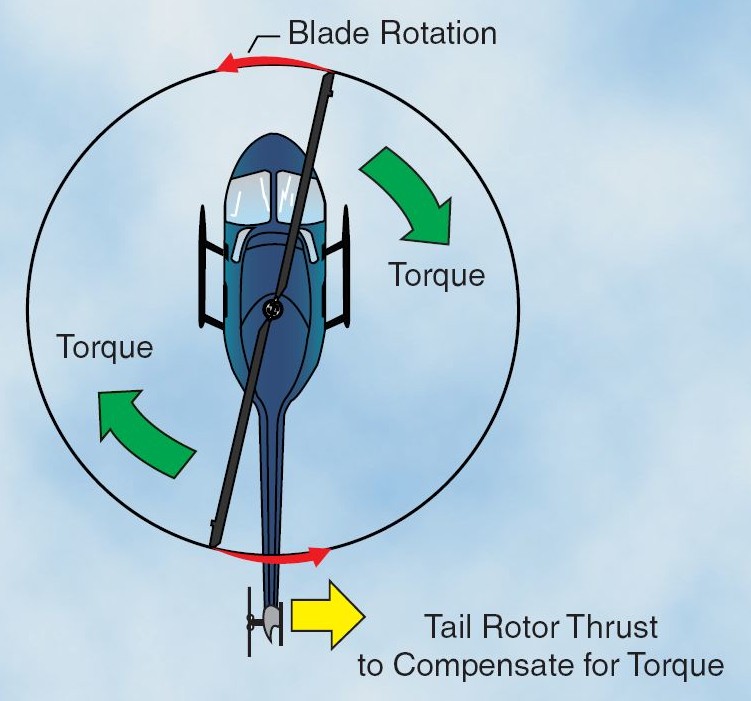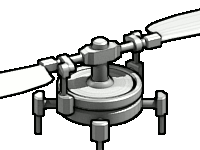The first step necessary to achieve flight is generating a force which counters gravity. By moving an airfoil through the air, lift is generated due to the shape and angle of the airfoil. In the case of a helicopter, multiple airfoils are attached to a shaft, and by spinning that shaft, lift is generated.
This works well up until the moment the helicopter no longer touches the the ground. Newton's laws of motion dictate that to every action there is an equal and opposite reaction. This means that if the helicopter's rotor turns in one direction, the body of the helicopter will have a tendency to turn in the opposite direction. There are multiple solutions to this problem, but the most common solution is the tail rotor. The tail rotor generates a force which counters the helicopter's tendency to spin.
The next problem is movement, a helicopter with only the previous two mechanisms will only be able to take off and land. One way to make a helicopter move is by constantly changing the angle of attack of the blades. This in turn causes the blades to generate more or less lift on different parts of the surface the rotor blades cover, and this causes the helicopter to move.
This is implemented using a swashplate mechanism. The blades are connected to the rotor shaft using a bearing. A rod is also connected to the blade, and by moving this rod up and down, the blade rotates around its length axis. This means that the rod controls the angle of attack of the blade, and thus controls the lift the blade generates.
All these rods are connected to a ring-shaped plate around the main rotor shaft, and this rotating plate is then connected to a stationary plate using a bearing. Tilting the stationary plate causes the blades to different lift depending on their position, and this causes the helicopter to move. Moving the plate up and down changes the angle of attack of all the blades by the same amount, and thus allows the pilot to control how much lift the helicopter generates.
The combination of these mechanisms allow the helicopter to move in virtually any direction.
Sources:
http://en.wikipedia.org/wiki/Helicopter_rotor
http://en.wikipedia.org/wiki/Swashplate_%28helicopter%29
http://science.howstuffworks.com/transport/flight/modern/helicopter1.htm
Subscribe to:
Post Comments (Atom)






0 comments:
Post a Comment